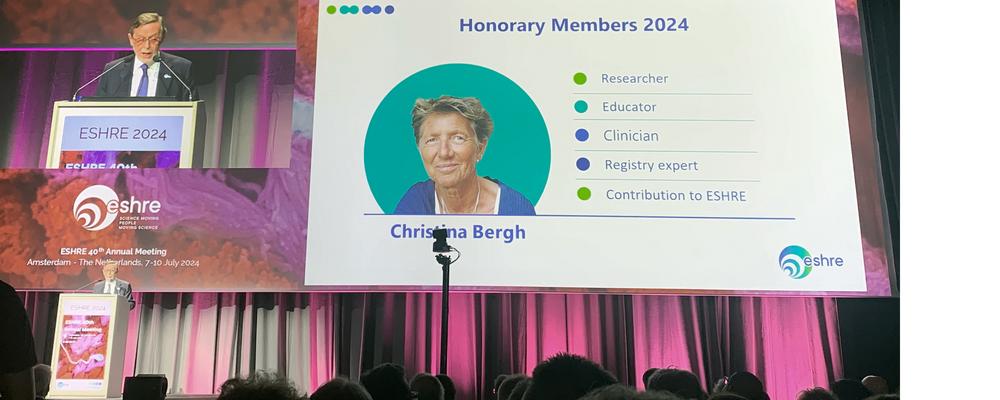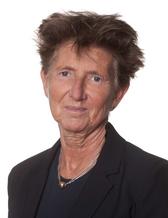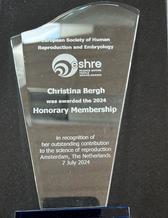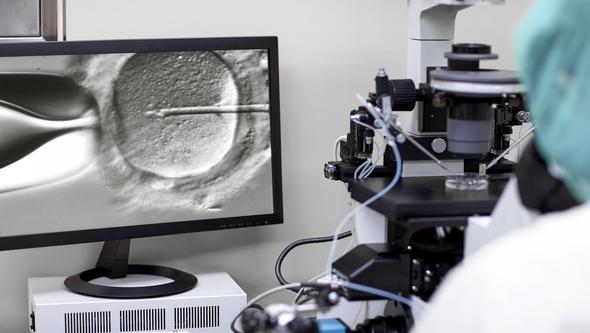
- Home
- News and events
- Find news
- Christina Bergh revolutionized IVF globally – now honored
Christina Bergh revolutionized IVF globally – now honored
Her research has elevated the quality and safety of assisted reproduction globally. Most notably, the rate of twin and triplet pregnancies from IVF has been greatly reduced. Christina Bergh is now being honored for her research with an honorary membership in the European Society of Human Reproduction and Embryology (ESHRE).

Multiple births, meaning pregnancies with two or more fetuses, are the single greatest risk factor for children born after IVF. The likelihood of a twin pregnancy increases when multiple embryos are transferred at the same time.
Multiple births significantly raise the risk of preterm birth and low birth weight. These factors, in turn, are associated with an increased risk of severe complications such as respiratory disorders, mental dysfunction, and cerebral palsy (CP).
With natural conception, about one percent of pregnancies result in twins.
With IVF, the rate of multiple pregnancies in Sweden once exceeded 30 percent. Now, it is down to two percent. A large study led by Professor Christina Bergh at the Institute of Clinical Sciences, University of Gothenburg, was the major contribution to this reduction.
“This is my most important research contribution. It was highlighted when I was presented with my honorary membership in ESHRE,” says Christina Bergh.

Honored before 11,000 in Amsterdam
What was it like to receive the honorary membership?
“It was during the opening ceremony of ESHRE 2024 in Amsterdam, in front of 11,000 fertility experts from around the world. The chairman introduced me, and I gave a thank-you speech. I received a glass statuette with the award’s inscription and received many congratulations from both familiar and unfamiliar participants afterward.”
What does the award mean?
“It means that the research I have led and participated in is considered important and has made a significant impact on patients struggling to conceive. Honorary membership means becoming a lifetime member of ESHRE without having to pay annual fees. But above all, it is the honor that matters.”
Improved IVF worldwide
What was the key focus of that important IVF study?
“It was a large, randomized study. We compared transferring one embryo at a time at two different occasions (one fresh and if not pregnant one frozen) to transferring two embryos at once. We showed that the birth rate did not differ between the groups and that the rate of multiple pregnancies dropped dramatically in the single-embryo group, leading to significantly better health outcomes for the children.”
The study’s results were published in 2004 in The New England Journal of Medicine.
“The method of transferring ‘one at a time’ has then been adopted worldwide. A few years after the original publication, our research was summarized in the journal Science as one of the ten developments which has been most important and most cited in reproductive medicin,” says Christina Bergh.
She also started with some colleagues and leads a national quality registry for assisted reproduction, Q-IVF.
“It is considered by many to be the best and most comprehensive quality registry in the world for assisted reproduction.”

Measures lacking evidence
What is your next step in reproductive research in Gothenburg?
“We are now leading a large, randomized study on the transfer of frozen embryos. We are comparing live birth rates between a completely natural menstrual cycle without any hormone supplements and a cycle supplemented with progesterone,” says Christina Bergh.
One concern she has is that not everything done in IVF is based on sufficient research.
“Unfortunately, many measures are taken to increase the birth rate that are not evidence-based. That is, no well-conducted studies have proven their benefit. Adding the drug progesterone in natural cycles with frozen embryos is one such measure widely applied today without knowing that it helps.”
Studying children and maternal health
Christina Bergh is also a key participant in a Nordic collaboration tracking children and mothers after IVF. The project relies on registry data and constitutes the world’s largest database for IVF children and mothers.
Several studies on children’s health, including diabetes, cancer, neurodevelopment, and school performance, have been published. Although some risks have been identified, most children born after IVF are healthy.
“We are now investigating whether IVF children have children of their own to the same extent as those born after natural conception. For the mothers, ovarian cancer has been a focal point for a long time. Many studies have been published with some varying results but often with too small patient groups and too short follow-up times,” explains Christina Bergh, continuing:
“Large cohorts and long follow-up periods are required, and we now have that to a much greater extent. Ovarian cancer is a very serious disease. It is crucial to clarify whether IVF stimulation affects the risk of such cancer.”
Text: Jakob Lundberg